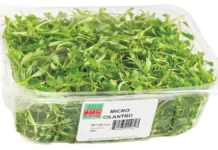
Article contributed by Mike Berman, COO, Day & Nite/All Service
In a standard commercial kitchen, what is the single most important feature of the room?
It’s not the customized drawer or aesthetically hip cupboard. Alternatively, it’s the placement of commercial refrigeration: you can make the case that they are truly transformational pieces of equipment in the food industry, and the tipping point in a restaurant’s daily operations. In terms of their bottom lines, most commercial operators don’t need hyper-customized cooling equipment. They simply need reliable refrigeration designed to last 365 days a year, seven days a week, 24 hours a day.
I want to take a deep dive into how commercial refrigeration impacts an operator’s budget, operations, and overall success – and why should cooling equipment be a top priority for restaurants and food service in 2023?
What is Commercial Refrigeration?
Commercial refrigeration is not your grandmother’s ice box. Today, commercial refrigeration refers to any equipment used to store food and beverages in supermarkets, restaurants, and specialty food, convenience stores, and other commercial spaces.
This cooling equipment includes basic refrigerators and coolers as well as walk-in boxes, reach-in freezers and coolers, ice machines, racks, beer coolers, and other specialized items.
The Costs of Commercial Refrigeration: Time, Money, and Energy
Since its advent a little over 100 years ago, commercial refrigeration has become a panacea for restaurants. Suddenly, food makers could bulk-purchase and freeze items and design their menus accordingly. In markets of inflation and scarcity, commercial fridges give restaurants the ability to run their businesses in a more cost-effective (and culinarily creative) fashion.
From a consumer standpoint, cooling equipment like reach-ins and kiosks, which used to be limited to airport and convenience stores, are increasingly prevalent in sit-down restaurants and other slower-paced commercial settings. This trend speaks to consumers’ value of convenience, as well as the impact of and expanded grab-and-go culture: one of the many byproducts of the pandemic.
Regardless of where this equipment is installed, commercial refrigeration must operate at all hours of the day, every day of the year. Consequently, this equipment is one of the most substantial drains on the energy grid; and if customers fail to invest in high-quality equipment and maintenance, it’s also a costly endeavor.
Even so, when it comes to commercial refrigeration, time is not money: it’s something far more valuable. Money itself isn’t just a one-time transaction, but an investment in aggressive, detail-oriented maintenance.
Ideally, commercial refrigeration providers should empower clients to reclaim their time, flex to the evolving demands of consumers, and invest in cooling equipment designed for long-term value and energy efficiency – not just aesthetics.
How Long Does Commercial Refrigeration Last?
When built with longevity and efficiency in mind, commercial refrigeration should last many years, even in settings with frequent contact between users and equipment.
If you’re searching for new cooling equipment for your commercial space, brand quality matters. Recently, we performed a survey of over 70,000 unique distinct pieces of equipment: the average age was 12.5 years, and many users overwork their equipment without proper care.
When we consider the aging of anything – our cars, our homes, ourselves – and the consequences of daily use, a lax approach to ongoing equipment repairs is flirtation with disaster.
What is the opposite of this approach? An aggressive attentiveness to maintenance, and cooling technology designed with the aftermarket in mind.
Commercial Refrigeration Repair: Warranty vs. Maintenance
In conversations about commercial refrigeration maintenance and repair, it’s crucial to distinguish between maintenance and warranty. Whereas a warranty exists to fix the surface-level issue, treating the symptom upon diagnosis, the true illness can be much deeper and, in most cases, prevented by ongoing and diligent maintenance.
For our operators, we endorse “aggressive” maintenance as a necessary complement to any warranty plan, and to lower the total costs of operation. Aggressive maintenance involves quarterly or even monthly equipment checks, depending on the frequency of equipment use.
If businesses neglect this approach and treat maintenance as a separate line item on the budget, they’re almost guaranteed to see disproportionate repair costs as their equipment ages. From a holistic, life-cycle perspective of your budget, maintenance should be a 24/7 operation in the background of commercial refrigeration.
The Future of Commercial Refrigeration: Overturning the Prevailing Model
To understand the overall impact of commercial refrigeration in 2023 and beyond, operators must balance the individual influences of equipment life cycles, warranty, and maintenance, all of which interact in the aftermarket.
This philosophy is akin to value engineering, in which we consider the entire life cycle of the equipment – not just the appeal of the fancy drawers or the momentary “cost savings” of ignoring a faulty coil for another day.
In a post-2020 world, our Day & Nite team and other refrigeration servicers are challenged – and, arguably, required – to upturn the prevailing industry model of commercial refrigeration. Ideally, we transform a highly manual, time-impoverished operation into an integrated model, with aftermarket considerations deeply involved throughout the entire process: from manufacturers and dealers to warranty service providers, installers, and user operators.
As restaurants and commercial food services continue to recover from the pandemic, time is their most valuable and finite asset. And while time is an asset, money is an investment in opportunity: the opportunity to attract more customers, expand menus, and develop an efficient, modular approach to food storage that cuts costs and preserves even more time.























